Meizu MX4 Review
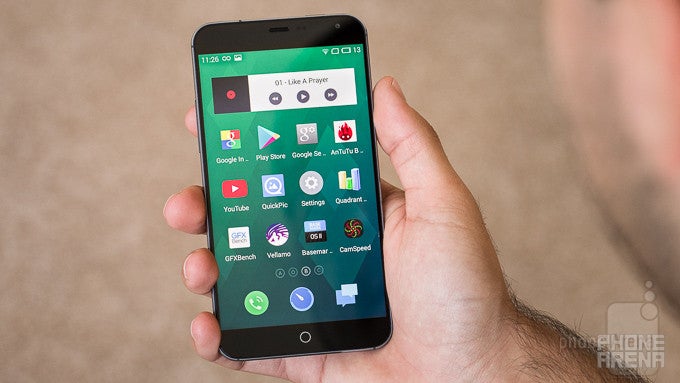
Introduction
Meizu has been slinging flagship devices at the market for years now, but those have been having a hard time sticking around in meaningful quantities. This is specifically true as of late as local rival Xiaomi has been showering itself in glory, overshadowing Meizu in the process. Now, with the MX4, Meizu is ready to try again.
Plenty is on offer with this phone, including a large, 5.4-inch display, an octa-core processor, and a 21 MP camera – all powered by a 3100 mAh battery. For this, you'll have to whip out $449, but don't expect to find it on the shelves of your local brick and mortar. That said, practice has shown that devices like this find their way to the States and elsewhere, and there's always Meizu's international online store, which offers free express shipping and covers any import taxes you might incur.
So does the attractive price tag and the seemingly infallible specs make the MX4 a competitive device? Let's find out!
Design
This thing is sturdy and sits nicely in the hand, but we wish Meizu spent a little more time styling the rear.
The Meizu MX4 packs a 5.4-inch screen that's plenty large. So how big of a device are we talking about? At 5.67 x 2.96 x 0.35 inches (144 x 75.2 x 8.9 mm), the MX4 is slightly smaller than the equally-trimmed LG G3, which is great news. The MX4 is also fairly light, at 5.19 oz (147 g), and that's always good news.
The MX4 nevertheless feels very solid in the hand, and matches your palm nicely due to that rounded back, so overall ergonomics are excellent – not least because Meizu has done an excellent job trimming any excess fat with the bezels. The materials used with the phone are well-selected as well – we've got a metal frame, within which the device is nestled, and an especially soft plastic shell at the rear. Metal is also used with the power and volume keys, both of which provide excellent tactile feedback, though the former is awkwardly-located at the top – a problem with as large a device.
Overall, we can't say that the MX4 won us over with its exterior – it's not bad by any and all means, but the rear shell is kind of unsightly.
Display
A very bright, 15:9 display with some acceptable weaknesses.
An extra large, 5.36-inch IPS screen by Sharp or JDI (depending on the batch) is what the MX4 has going on. The resolution is rather odd, at 1152 x 1920 (15:9), good for the excellent 418 pixels per inch. For protection, Meizu is using a Corning Gorilla Glas 3 cover, which should safeguard against scratches and even small drops. Thankfully, this also means that the surface of the display is coated with an oleophobic solution, meaning that oily fingerprints are minimized.
Also excellent are the maximum and minimum levels of brightness the display can produce – 535 and 2 nits, respectively. These figures are corroborated by our own findings – reading the screen outside, even with the sun over our shoulder, was easy, and the extremely low brightness of the panel also allowed for a comfortable viewing during the night. As for the screen's color reproduction, we're looking at acceptable deviations from the target, though the color temperature, at 7778 K (6500 K is the reference here), is a bit too high, which results in a bluish overcast that is especially visible with whites and grays. The display's coldness is not its only drawback, though, as gamma, at 2.01, is also sub-par (2.2 is ideal).
Interface and functionality
The MX4's Flyme OS interface is unique and fresh, but has a small learning curve and there are still some kinks to iron out.
Like most Android manufacturers, Meizu has made sure that it differentiates its products from competitors through the software available on its devices. The company's custom Android overlay, dubbed Flyme OS (based on Android 4.4.2 KitKat), has been around for a while, and that shows.
Flyme OS is pretty different from what we're used to. For starters, there's only one capacitive navigation key on the bottom bezel – a circle for home. On either sides of it, there's nothing, but both areas are active and work only if you swipe them up, which brings up a small, horizontal tab with your recent apps. If you simply want to go back a step, you just swipe up the home button (or use the on-screen back button when available). The icon set is quite different, too, but we mostly like the flat and extremely stripped-down visuals. We also liked Meizu's take on the notification and settings menus, both of which are attractive and down-to-the-point.
In terms of extras, as you might expect based on the above, there are only a few. Interestingly enough, Meizu has implemented a feature that is essentially identical to Apple's Spotlight search, including the way you call it up from the homescreen – with a swipe up at the upper part of the screen. Whatever Meizu calls this feature, its function is quite simple – to allow you to perform quick searches with a scope that transcends beyond what's on your smartphone (it looks up stuff online, too).
Like so many other Chinese manufacturers, the MX4 also comes with its own theme engine and app store. Both of these are filled with extras (like a ton of custom themes), but at least on our sample model of the MX4, these are both in Chinese so it's pretty much impossible to navigate either. Lastly, there's a Security Center app, which is more of a suite type deal, as it allows you to clear out junk files, identify which the largest files on your MX4 are (in case you need space), and also even lets you look for viruses and manage app permissions easily.
Aboard the MX4 is the just-released octa-core MediaTek MT6595 along with 2GB of RAM. The chipset has two clusters of four cores (2.2GHz Cortex-A17 and 1.7GHz Cortex-A7) working in an ARM big.LITTLE configuration. In simpler terms, this means that the chip intelligently evaluates the task at hand and switches between the two clusters depending on the number-crunching requirements. So, for example, if your phone is idling and just receiving notifications from Viber or Facebook, the MT6595 will likely just use the power-efficient Cortex-A7 cluster to do the work, saving you battery in the process. If, however, you need the phone to go full out because you're gaming, it has the ability to force all eight cores to work simultaneously. The GPU on board is a 600MHz, quad-core PowerVR G6200.
All of the above translates well when synthetic benchmarks are involved, and, indeed, actual real life usage. Most of the benchmarks we did were positive, though some were a bit of a let down and indicated weak graphics performance. In our experience, however, the MX4 ran very intensive games (think Asphalt 8) more than just fine, so it could be that a driver or a line of code is breaking something. In any case, and on the whole, this is the most powerful MediaTek chip to date and it will handle whatever you throw at it well.
Finally, as far as internal memory goes, there are three models available: 16GB, 32GB, and 64GB. Unfortunately, none of these will allow you to expand through a microSD card, so keep that in mind.
Until recently, most Chinese devices lacked LTE connectivity, but that is no longer the case, and the MX4 is no exception here. However, it only supports category 4 FDD LTE bands 1, 3, and 7, and that means you won't be able to use LTE in the States – just Europe.
The MX4 is equipped with the usual: assisted GPS with GLONASS support, Bluetooth 4.0, dual-band Wi-Fi 802.11ac, NFC, and even MHL – so you can cast the MX4's screen to a larger one so long as you've got an appropriate cable.
For browsing, you have two options – the built-in browser by Meizu and Google Chrome. We'll be blunt and say that Meizu has got some work to do on its browser before it can be any kind of a challenger to Chrome, as there are very noticeable delays, especially when navigation (i.e. scrolling) is concerned. In other words, stick to Chrome, and you'll have a no-frills browsing experience.
In terms of extras, as you might expect based on the above, there are only a few. Interestingly enough, Meizu has implemented a feature that is essentially identical to Apple's Spotlight search, including the way you call it up from the homescreen – with a swipe up at the upper part of the screen. Whatever Meizu calls this feature, its function is quite simple – to allow you to perform quick searches with a scope that transcends beyond what's on your smartphone (it looks up stuff online, too).
Like so many other Chinese manufacturers, the MX4 also comes with its own theme engine and app store. Both of these are filled with extras (like a ton of custom themes), but at least on our sample model of the MX4, these are both in Chinese so it's pretty much impossible to navigate either. Lastly, there's a Security Center app, which is more of a suite type deal, as it allows you to clear out junk files, identify which the largest files on your MX4 are (in case you need space), and also even lets you look for viruses and manage app permissions easily.
Processor and memory
MediaTek's most powerful chipset yet.
Aboard the MX4 is the just-released octa-core MediaTek MT6595 along with 2GB of RAM. The chipset has two clusters of four cores (2.2GHz Cortex-A17 and 1.7GHz Cortex-A7) working in an ARM big.LITTLE configuration. In simpler terms, this means that the chip intelligently evaluates the task at hand and switches between the two clusters depending on the number-crunching requirements. So, for example, if your phone is idling and just receiving notifications from Viber or Facebook, the MT6595 will likely just use the power-efficient Cortex-A7 cluster to do the work, saving you battery in the process. If, however, you need the phone to go full out because you're gaming, it has the ability to force all eight cores to work simultaneously. The GPU on board is a 600MHz, quad-core PowerVR G6200.
All of the above translates well when synthetic benchmarks are involved, and, indeed, actual real life usage. Most of the benchmarks we did were positive, though some were a bit of a let down and indicated weak graphics performance. In our experience, however, the MX4 ran very intensive games (think Asphalt 8) more than just fine, so it could be that a driver or a line of code is breaking something. In any case, and on the whole, this is the most powerful MediaTek chip to date and it will handle whatever you throw at it well.
Finally, as far as internal memory goes, there are three models available: 16GB, 32GB, and 64GB. Unfortunately, none of these will allow you to expand through a microSD card, so keep that in mind.
Internet and connectivity
A full connectivity stack.
Until recently, most Chinese devices lacked LTE connectivity, but that is no longer the case, and the MX4 is no exception here. However, it only supports category 4 FDD LTE bands 1, 3, and 7, and that means you won't be able to use LTE in the States – just Europe.
The MX4 is equipped with the usual: assisted GPS with GLONASS support, Bluetooth 4.0, dual-band Wi-Fi 802.11ac, NFC, and even MHL – so you can cast the MX4's screen to a larger one so long as you've got an appropriate cable.
For browsing, you have two options – the built-in browser by Meizu and Google Chrome. We'll be blunt and say that Meizu has got some work to do on its browser before it can be any kind of a challenger to Chrome, as there are very noticeable delays, especially when navigation (i.e. scrolling) is concerned. In other words, stick to Chrome, and you'll have a no-frills browsing experience.
Camera
An awesome shooter with a large, 1/2.3” sensor and equally-awesome software.
On board the Meizu MX4 is an excellent, 21-megapixel Sony Exmor RS IMX220 stacked sensor. This is a larger-than-average (on par only with the Xperia Z2/Z3), 1/2.3'' unit with 1.2µm pixels. The sensor is complemented by a two-tone LED flash and 0.3 second auto focus. Up at the front, we've got a 2-megapixel selfie cam, capable of 1080p video capture.
Starting with the UI, that's probably one of our favorite parts of the Meziu MX4's camera. It's definitely not perfect – for example, certain elements need to be recoded so they can switch to landscape orientation – but it's still a very fresh take on what is a fairly stale experience. Most of the options are located at the bottom and the design of the menus is pleasant and easy to grasp. To change to a different shooting mode, you simply have to swipe left and right horizontally. Speaking of modes, there are quite a few available, including HDR, Panorama, Beauty, Light Field (post-capture refocusing), Night, Microspur (great macros with this one), and, of course, Manual with controls for ISO, exposure, shutter speed and focal length. You can also shoot a burst of up to 30 photos by long-pressing the shutter key.
So, high marks on the software, but does that indicate as good stills quality? On the whole – yes, very much so. The images the MX4 snaps in broad daylight are attractive, very detailed, and mostly have their exposure and color reproduction spot on. We say mostly because, occasionally, snaps did come out slightly underexposed, while others had white balance issues and appeared visibly purplish. HDR mode is also best left alone, unless you've got a tripod handy or have very steady hands – otherwise, ghosting and blur are pretty much guaranteed, not to mention that photos look artificial.
Indoors, as long as you don't shoot in complete darkness, you can expect the MX4's camera to churn out well-balanced snaps in terms of colors and exposure on the whole, and ones that are, again, very detailed. As soon as the dual-tone LED flash gets involved, however, you've got a problem. Our studio shots clearly show that, but let's just say that snaps come out with an aggressive green fringe. At least the LED duo is powerful enough to illuminate the scene.
Multimedia
Rock-solid built-in apps, but nothing fancy.
The 5.4-inch display of the MX4 is perfect for watching video on the go. For that, you'll need to make use of the built-in video player app, which is pretty standard and straightforward – the only extras present are the ability to miniaturize the playback window (it'll be layered on top of the UI) and to set videos to loop. Thankfully, the MX4 has all the needed codec libraries and reproduces essentially every encoding we could think of problem-free – including H.264, DivX, Xvid, MOV, MKV, and others.
As for the music player, it's similarly basic, though it might feel advanced if compared with the stock Android app. Here we have a piece of software that's interconnected with Meizu's (Chinese) store, though you can obviously switch the view to local content only. Extras like equalizer and other goodies are only available with earphones on. Speaking of music, we've got to note that the MX4's mono loudspeaker on its bottom side is very powerful and easily fills a medium-sized room with sound. Audio fidelity is also great for a smartphone.
Call quality
We've heard better.

The microphone, on the other hand, had a little better showing, as voices were more successfully fetched to the other side, without as many serious artifacts in sound. That said, we're again talking about middling performance at best – nothing fancy, but nothing terrible, either.
Battery life
Welcome to the two-days-per-charge club, Meizu!
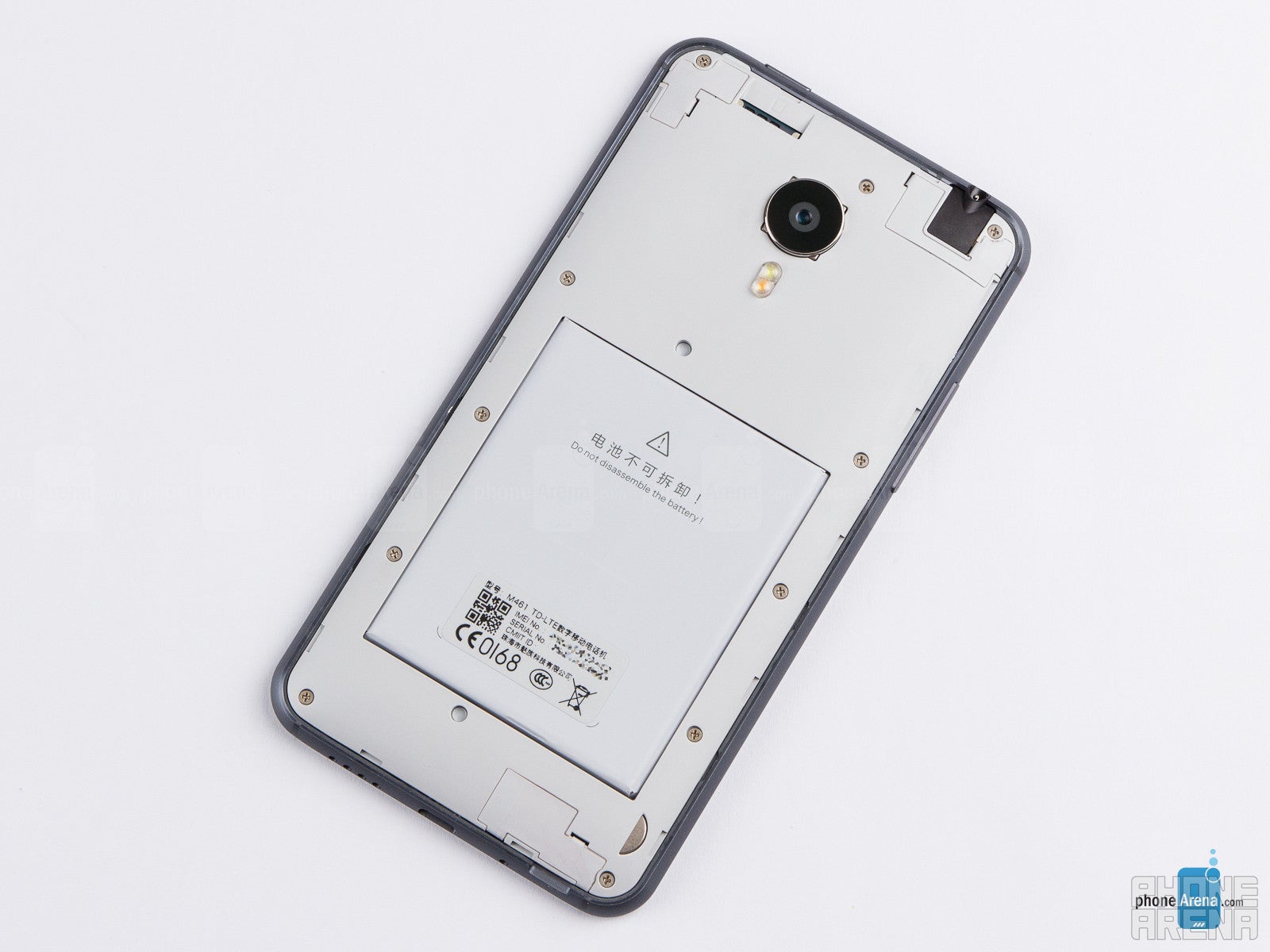
Meizu's new flagship clocked 7 hours and 25 minutes on our custom battery life test, putting it in the same league with devices like the Galaxy S5 and the HTC One M8. In our own experience, the MX4 is a two-days-per-charge device, and that's awesome. To help you squeeze out even more juice out of the pack, Meizu has also included a dedicated power-saving mode (along with balanced and performance modes), though neither of these have any descriptions attached to them. From experience, we'd wager that we're most likely looking at a simple processor under-clock as connectivity does not seem to be affected under the aforementioned conservative mode.
Conclusion
So there you have it – a worthy flagship device that can be had for the price of a much inferior upper-mid range phone from a brand like Sony, LG, or Samsung. That said, do keep in mind that the phone ships from Hong Kong, and all warranty-related repairs will have to be carried out there as well. So it follows that the MX4 has to deliver, and deliver in full.
Well, to a very large extent, it does. The design isn't anything jaw-dropping, but it's still fairly attractive and the phone is very sturdy and comfortable to use for its screen size. The display is pretty great, too, and performance is also top notch. The 20.7-megapixel Sony camera at the back is no joke, either. Last, but not least, the MX4's 3100 mAh battery ensures day and a half of juice even with hard usage. On the down side, the sample unit we received had Meizu's Chinese app and theme stores integrated into its interface and a few essential apps, which is a bit of a let-down. After all, we don't all know Chinese. If you're willing to turn a blind eye to that little nuisance, however, then the Meizu MX4 is a great flagship for those of you on a smaller budget.
Android version: 4.4.2
Flyme OS version: 4.0.2l
Baseband version: MOLY.LR9.W1421.MD.LWTG.MP.V6.P13, 2014/09/20 10:04
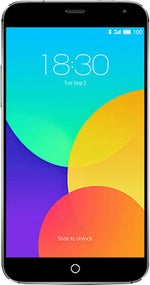
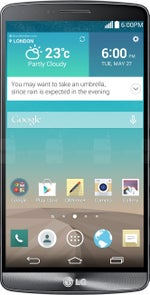

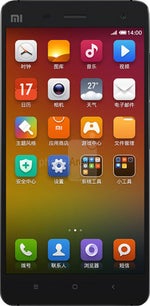























Things that are NOT allowed: